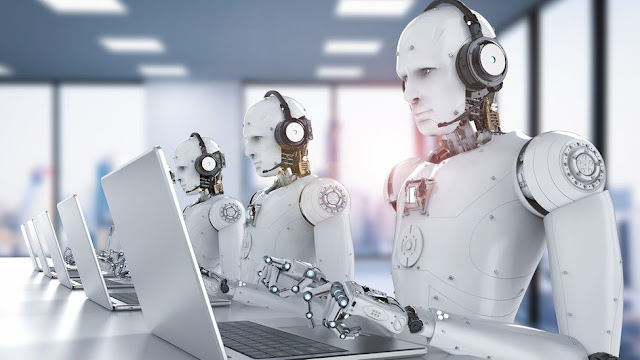Robotic Sciences "A Journey into the Future"
Robotic sciences have long been the stuff of science fiction, but today, they are a tangible reality shaping our world in remarkable ways. From self-driving cars to robotic surgeries, and even friendly AI assistants, robots have become an integral part of our daily lives.
The Evolution of Robotics
The history of robotics dates back centuries, with early automata like Leonardo da Vinci's mechanical knight serving as precursors to modern robots. However, it wasn't until the mid-20th century that robotics began to emerge as a distinct scientific field. The term "robot" was first coined by Czech writer Karel. This play introduced the idea of artificial, humanoid beings created to serve humans.
Fast forward to the 1950s, and we witness the birth of the first true robots, primarily used in industrial settings. These early robots were large, unwieldy machines programmed for repetitive tasks, but they laid the foundation for what was to come.
The Rise of Intelligent Machines
The 21st century brought about a significant shift in the world of robotics, with the focus shifting from mere automation to intelligence. Artificial intelligence (AI) became a cornerstone of robotic sciences, allowing machines to learn, adapt, and interact with the world in increasingly sophisticated ways.
One notable milestone in this journey was the development of self-driving cars. Companies like Tesla and Waymo have harnessed the power of AI and robotics to create vehicles that can navigate complex road systems autonomously. This innovation promises to revolutionize transportation, making it safer and more efficient.
Another groundbreaking advancement is the use of robotics in healthcare. Robotic surgeons, guided by precise algorithms and operated by skilled surgeons, have performed intricate surgeries with unparalleled precision. These machines are not here to replace doctors but to enhance their capabilities and improve patient outcomes.
The Humanoid Robots
While robots of the past often resembled mechanical arms or simple machines, today's robots are becoming more humanoid. Humanoid robots, like Boston Dynamics' Spot or Sophia the AI robot, mimic human movements and interactions. This development is driven by the desire to create robots that can seamlessly integrate into human society, from assisting in homes to working alongside us in industries.
Humanoid robots hold great potential in a variety of fields, from elderly care to disaster response. Their ability to navigate complex environments and interact with humans in a natural way makes them versatile tools with a wide range of applications.
Challenges and Ethical Considerations
As we venture further into the world of robotics, we encounter challenges and ethical considerations. The rise of AI-powered robots raises questions about job displacement, privacy, and the potential misuse of advanced technology. It is imperative that we address these concerns proactively, ensuring that the benefits of robotics are shared equitably and responsibly.
The Future of Robotics
Looking ahead, the future of robotics is incredibly exciting. We can expect to see robots that are not only highly intelligent but also capable of emotional intelligence. Imagine robots that can understand and respond to human emotions, making them more empathetic and better companions.
Additionally, the fusion of robotics and nanotechnology holds immense promise. Tiny robots, often referred to as nanobots, could revolutionize medicine by delivering targeted treatments within the body, diagnosing diseases at an early stage, and performing delicate procedures at the cellular level.
In Conclusion,
The world of robotic sciences has come a long way since its inception, evolving from clunky machines to intelligent, humanoid robots that are reshaping industries and our daily lives. While challenges and ethical considerations remain, the future of robotics holds incredible potential for innovation and progress. As we continue to advance in this field, it is essential to approach it with responsibility and a commitment to harnessing its power for the betterment of society. The journey into the future of robotics is an exciting one, and we are only beginning to scratch the surface of what is possible.
Hope you like it!
For earning money here is link:







0 Comments